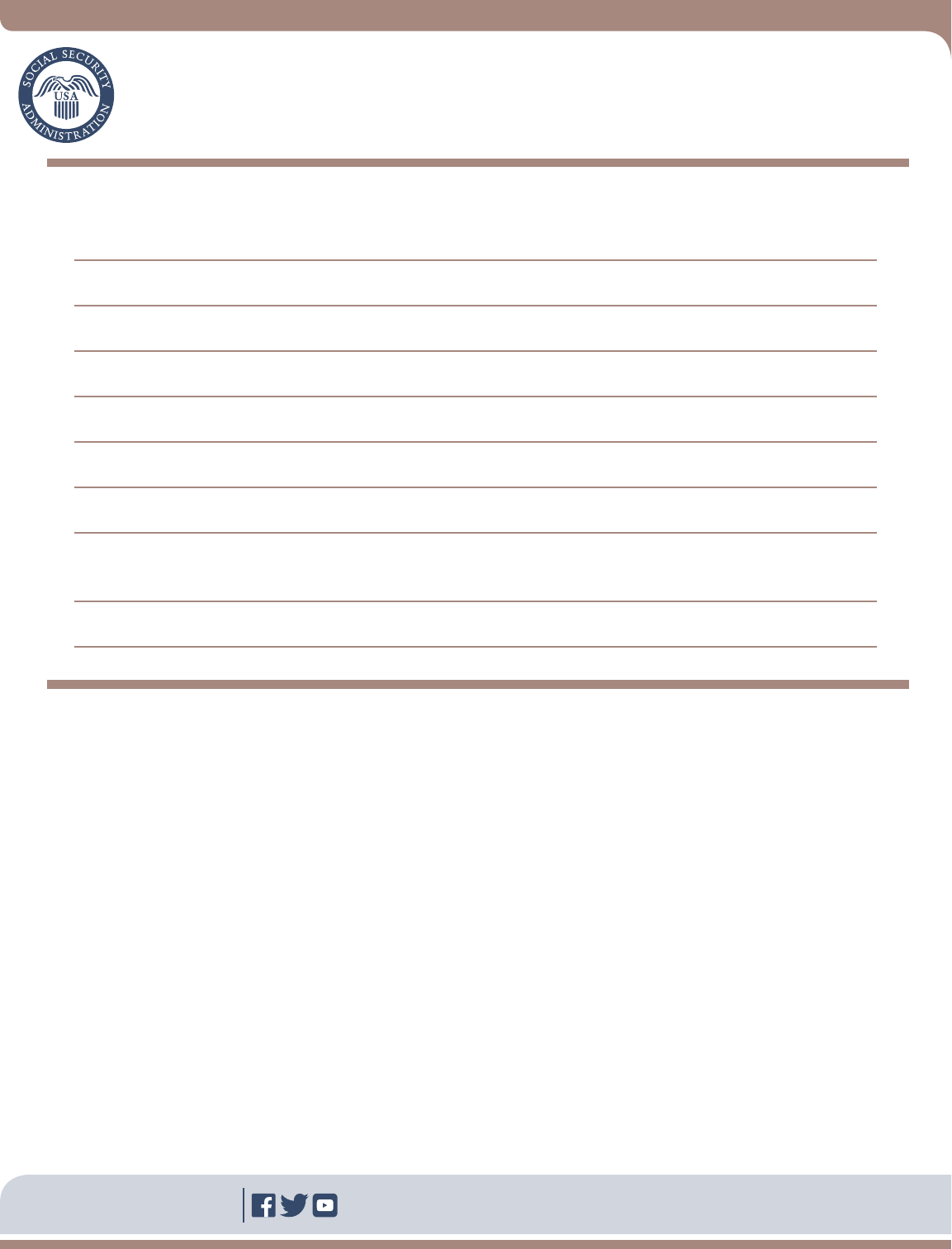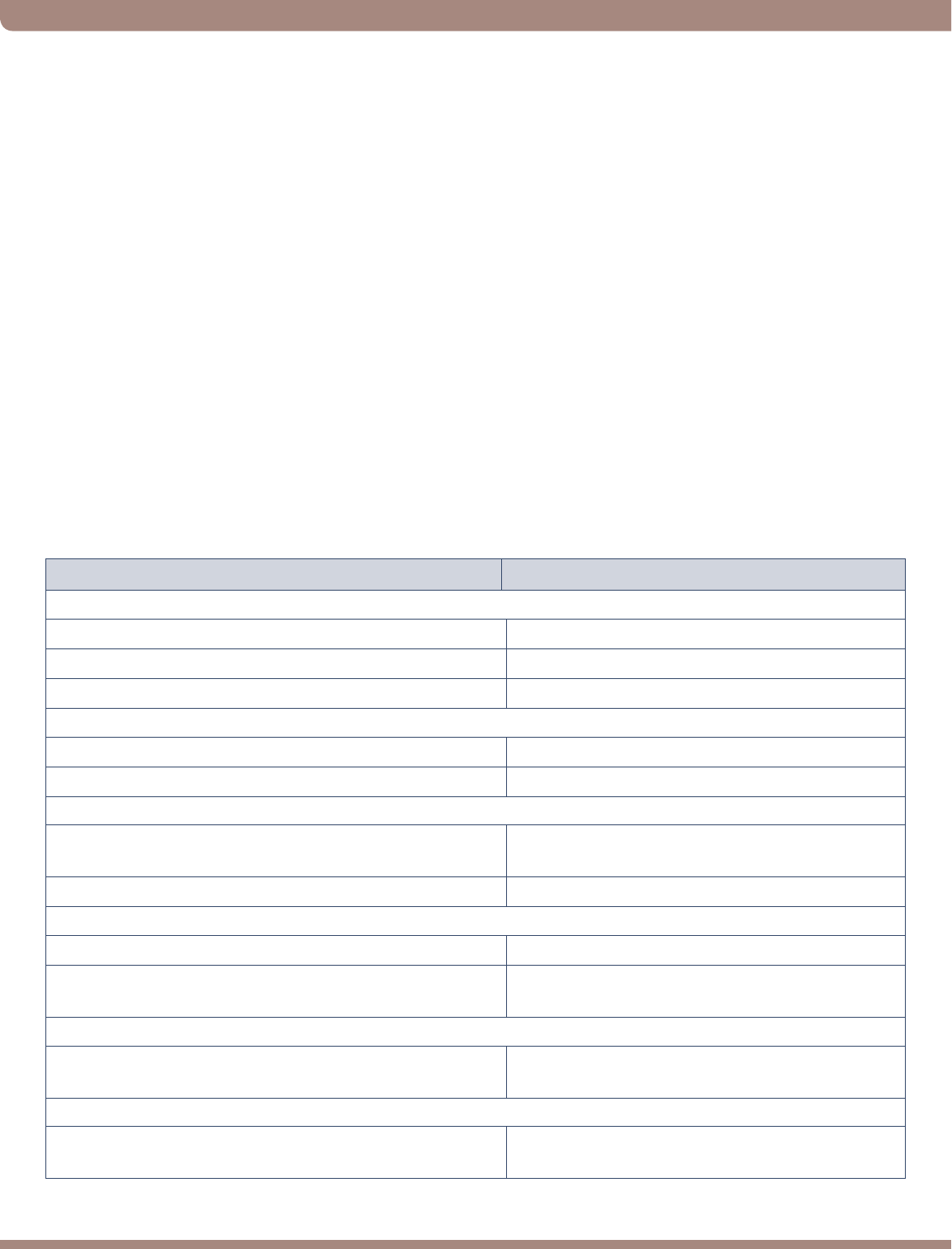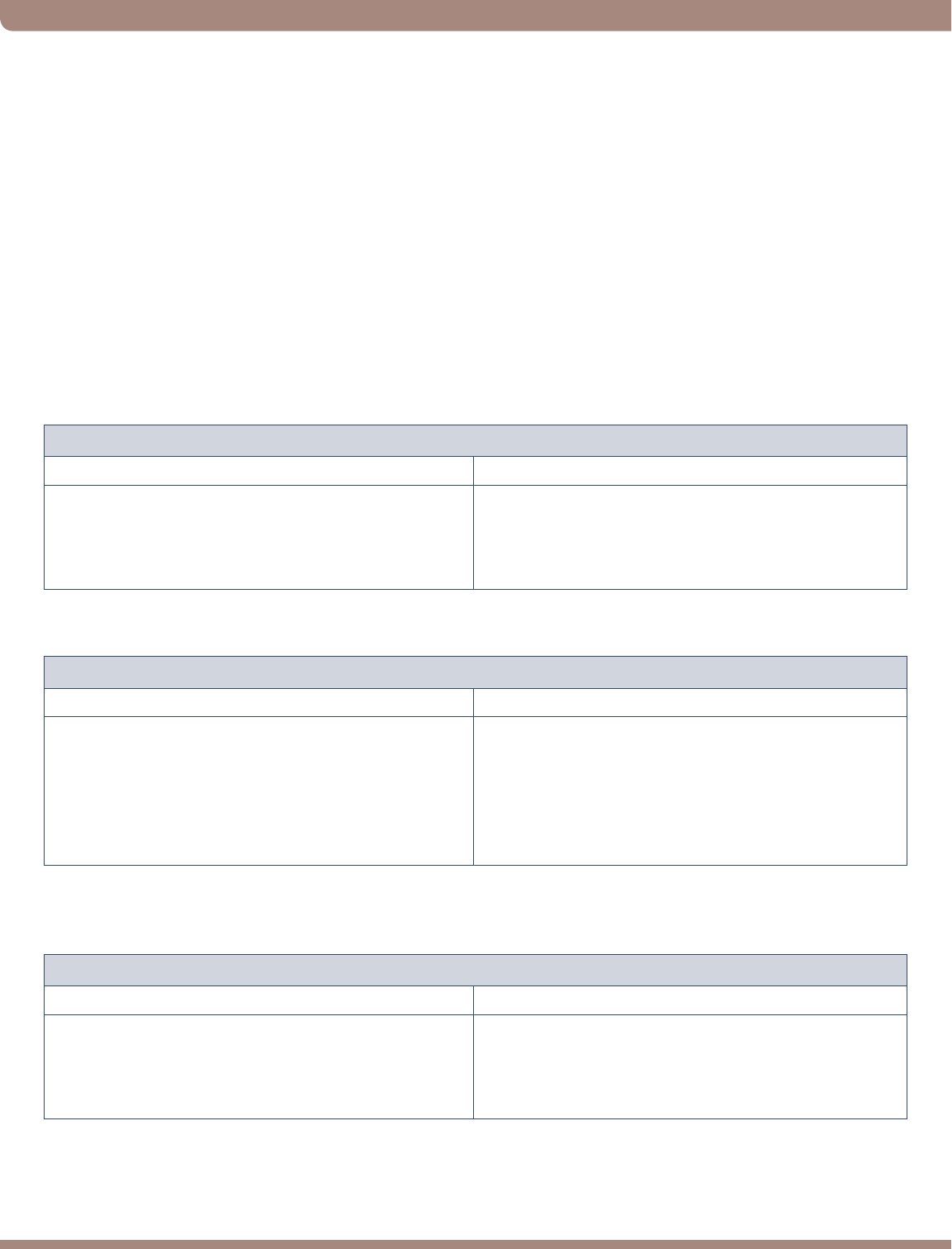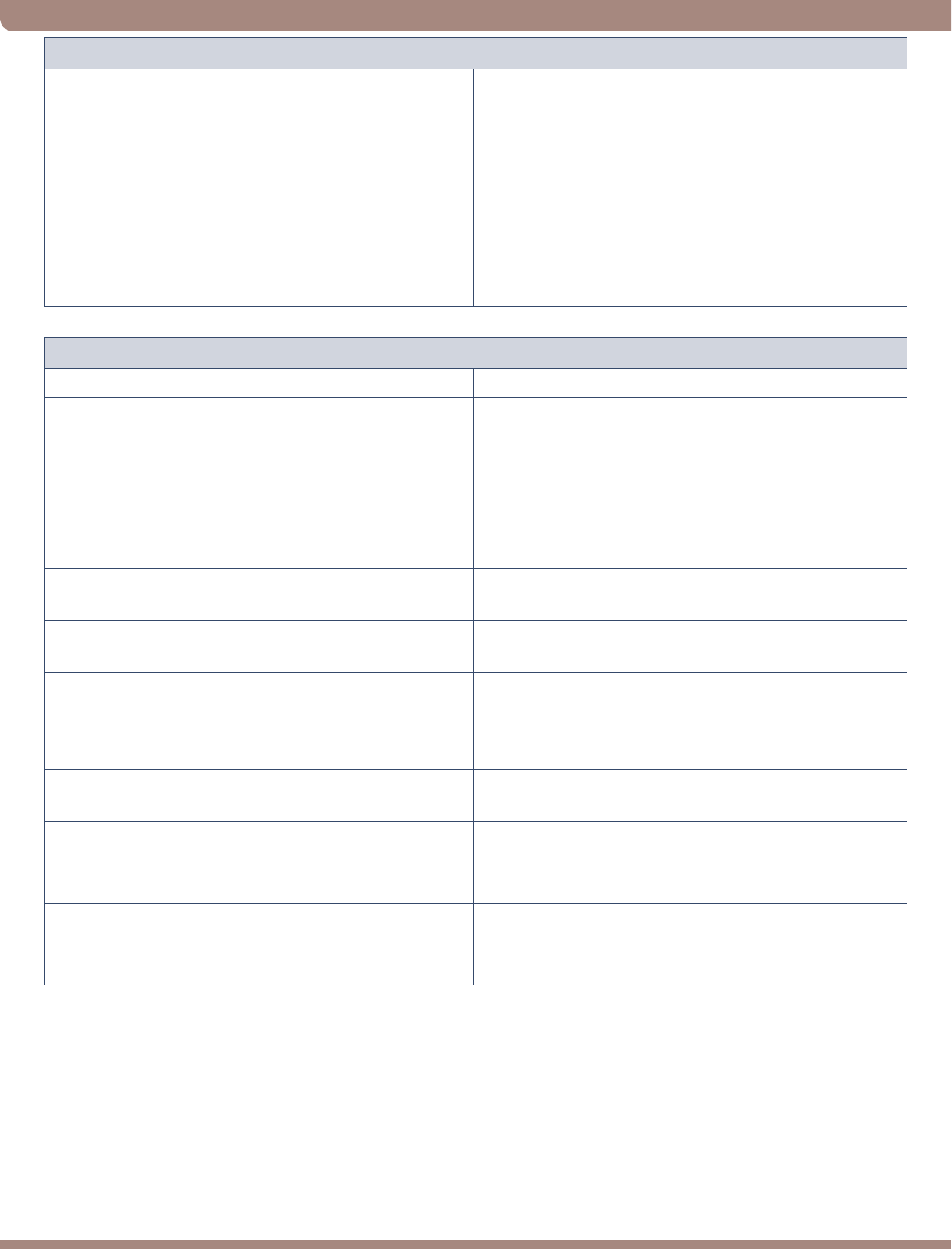
(over)
Agreement Between The United States And Italy
Agreement Between The United States
And Italy
Contents
Introduction 1
Coverage and Social Security taxes 2
Certificate of coverage 3
Monthly benefits 5
An Italian pension may affect your U.S. benefit 7
What you need to know about Medicare 8
Claims for benefits 8
Authority to collect information for a certificate coverage
(see pages 3-4) 9
Contacting Social Security 9
Introduction
An agreement effective November 1, 1978,
between the United States and Italy improves
Social Security protection for people who work
or have worked in both countries. It helps many
people who, without the agreement, would not
be eligible for monthly retirement, disability or
survivors benets under the Social Security
system of one or both countries. It also helps
people who would otherwise have to pay
Social Security taxes to both countries on the
same earnings.
For the United States, the agreement
covers Social Security taxes (including the
U.S. Medicare portion) and Social Security
retirement, disability and survivors insurance
benets. It does not cover benets under the
U.S. Medicare program or the Supplemental
Security Income program. For Italy, it also
includes family allowances.
This booklet covers highlights of the agreement
and explains how it may help you while you
work and when you apply for benets.
The agreement may help you, your
family and your employer
• While you work—If your work is covered
by both the U.S. and Italian Social Security
systems, you (and your employer, if you are
employed) would normally have to pay Social
Security taxes to both countries for the same
work. However, the agreement eliminates
this double coverage so you pay taxes to
only one system (see pages 2-3).
SocialSecurity.gov

2
(over)
Agreement Between The United States And Italy
• When you apply for benets—You may
have some Social Security credits in both
the U.S. and Italy but not have enough to
be eligible for benets in one country or
the other. The agreement makes it easier
to qualify for benets by letting you add
together your Social Security credits in
both countries. For more details, see the
section on “Monthly benets” beginning on
page 5.
Coverage and Social Security taxes
Before the agreement, employees, employers
and self-employed people could, under certain
circumstances, be required to pay Social
Security taxes to both the United States and
Italy for the same work.
Under the agreement, a U.S. national who
would otherwise be covered by both countries
is only covered by the United States. An
Italian national or dual U.S./Italian national
who would otherwise be covered by both
countries generally may choose the country
to which Social Security taxes will be paid
(see pages 3-4).
Summary of agreement rules
The following table shows whether your work is
covered under the U.S. or Italian Social Security
system. If you are covered under U.S. Social
Security, you and your employer (if you are an
employee) must pay U.S. Social Security taxes.
If you are covered under the Italian system, you
and your employer (if you are an employee)
must pay Italian Social Security taxes. The next
section explains how to get a form from the
country where you are covered that will prove
you are exempt in the other country.
Your work status Coverage and taxes
You are a U.S. national working in Italy:
• For a U.S. employer U.S.
• For an Italian (or other non-U.S.) employer Italy
• As a self-employed person U.S.
You are a U.S. national working in the U.S.
• For an Italian employer U.S.
• As a self-employed person U.S.
You are an Italian national working in the U.S.:
• For an Italian employer
(or Italian-controlled business)
You may elect either U.S. or Italian coverage
(see page 3).
• For a U.S. (or other non-Italian) employer U.S.
You are an Italian national working in Italy:
• For an Italian employer Italy
• For a U.S. employer or as a self-employed person
and you are a resident of the U.S.
You may elect either U.S. or Italian coverage
(see page 3).
You are a dual U.S./Italian national working in Italy:
• In employment or self-employment covered under
both systems
You may elect either
You are a dual U.S./Italian national working in the U.S.:
• In employment covered under both systems You may elect either U.S. or Italian coverage
(see page 3).

3
(over)
Agreement Between The United States And Italy
Your work status Coverage and taxes
• As a self-employed person U.S.
You are third country national regardless of the employer:
• Working in the U.S. U.S.
• Working in Italy Italy
NOTE: As the table indicates, a U.S. national employed in Italy can be covered by U.S. Social Security
only if he or she works for a U.S. employer. A U.S. employer includes a corporation organized under the
laws of the United States or any state, a partnership if at least two-thirds of the partners are U.S. residents,
a person who is a resident of the U.S. or a trust if all the trustees are U.S. residents. The term also includes
a foreign afliate of a U.S. employer if the U.S. employer has entered into an agreement with the Internal
Revenue Service (IRS) under section 3121(l) of the Internal Revenue Code to pay Social Security taxes for
U.S. citizens and residents employed by the afliate.
Election of coverage
Under the terms of the agreement, a national of
the United States or Italy who would otherwise
be covered by both countries, will generally
remain covered only by the country of which he
or she is a national and is exempt in the other.
However, Italian nationals and dual nationals
(nationals of both the U.S. and Italy) who are
working in employment or self-employment
covered by both systems must elect to be
exempt from coverage and taxation under one
system and to pay Social Security taxes to the
other. This election must be made within three
months from the date the work begins. If you
are an Italian national, you may subsequently
change your election of coverage. However, you
may change your election only:
• During the second year after the year you
begin your work; or, if later,
• When you acquire or lose permanent U.S.
residence status.
If you are a dual U.S/Italian national working
in employment or self-employment covered
by the United States and Italy, your election
for that particular job is nal and may not
be changed. However, you may change your
election if you begin a new job that is covered
by both countries.
To make an election, you or your employer
should write to the Social Security system of
the country where you want to continue your
coverage and request a certicate of coverage
from that country. You should send the request
to the appropriate address shown in the
following section of this booklet.
Certicate of coverage
A certicate of coverage issued by one
country serves as proof of exemption from
Social Security taxes on the same earnings in
the other country.
Certicates for employees
To establish an exemption from compulsory
coverage and taxes under the Italian system,
your employer must request a certicate
of coverage (form USA/IT 4) from the U.S.
at this address:
Social Security Administration
Ofce of International Programs
P.O. Box 17741
Baltimore, MD 21235-7741
USA
If preferred, the request may be sent by FAX to
(410) 966-1861. Please note this FAX number
should only be used to request certicates
of coverage.
No special form is required to request a
certicate but the request must be in writing and
provide the following information:
• Full name of worker;
• Date and place of birth;
• Citizenship;

4
(over)
Agreement Between The United States And Italy
• Country of worker’s permanent residence;
• U.S. Social Security number;
• Name and address of the employer in the
U.S. and Italy; and
• Date the employment began.
In addition, your employer must indicate if you
remain an employee of the U.S. company while
working in Italy or if you become an employee
of the U.S. company’s afliate in Italy. If you
become an employee of an afliate, your
employer must indicate if the U.S. company
has an agreement with the IRS under section
3121(l) of the Internal Revenue Code to pay
U.S. Social Security taxes for U.S. citizens and
residents employed by the afliate and, if yes,
the effective date of the agreement.
Your employer can also request a certicate
of U.S. coverage for you over the Internet
using a special online request form available
at www.socialsecurity.gov/coc. Only an
employer can use the online form to request a
certicate of coverage. A self-employed person
must submit a request by mail or fax.
To establish your exemption from coverage
under the U.S. Social Security system, your
employer in Italy must request a certicate of
coverage (form IT/USA 4) from Italy by writing
to the provincial ofce of the Istituto Nazionale
della Previdenza Sociale in the province where
the Italian employer is located.
The same information required for a certicate
of coverage from the United States is needed to
get a certicate from Italy except that you must
show your Italian Social Security number rather
than your U.S. Social Security number.
Certicates for self-employed people
If you are self-employed and would normally
have to pay Social Security taxes to both the
U.S. and Italian systems, you can establish your
exemption from one of the taxes.
• If you are a U.S. national or you are
a U.S. resident, write to the Social
Security Administration at the address
on page 10; or
• If you are an Italian national or dual U.S./
Italian national and wish to elect Italian
coverage, write to the provincial ofce of the
Istituto Nazionale della Previdenza Sociale in
the province where you work.
Be sure to provide the following information in
your letter:
• Full name;
• Date and place of birth;
• Citizenship;
• Country of permanent residence;
• U.S. and/or Italian Social Security number;
• Nature of self-employment activity;
• Dates the activity was or will be
performed; and
• Name and address of your trade or business
in both countries.
Eective date of coverage exemption
The certicate of coverage you receive from
one country will show the effective date of your
exemption from paying Social Security taxes in
the other country. Generally, this will be the date
you began working in the other country.
Certicates of coverage issued by Italy should
be retained by the employer in the United States
in case of an audit by the IRS. No copies should
be sent to IRS unless specically requested by
IRS. However, a self-employed person must
attach a photocopy of the certicate to his or
her income tax return each year as proof of the
U.S. exemption.
Copies of certicates of coverage issued by
the United States will be provided for both the
employee and the employer. It will be their
responsibility to present the certicate to the
Italian authorities when requested to do so. To
avoid any difculties, your employer (or you,
if you are self-employed) should request a
certicate as early as possible, preferably before
your work in the other country begins.
If you or your employer request a certicate of
coverage, you should read the Privacy Act and
Paperwork Reduction Act statements at the end
of this booklet.

5
(over)
Agreement Between The United States And Italy
Monthly benets
The following table shows the various types
of Social Security benets payable under the
U.S. and Italian Social Security systems and
briey describes the eligibility requirements that
normally apply for each type of benet. If you
do not meet the normal requirements for these
benets, the agreement may help you to qualify
(see “How benets can be paid” on page 7).
This table is only a general guide. You can
get more specic information about U.S.
benets at any U.S. Social Security ofce or by
calling our toll-free number at 1-800-772-1213
or by visiting Social Security’s website at
www.socialsecurity.gov. You can get more
detailed information about the Italian system
by writing to the Italian address on page 10
or by visiting the Italian Social Security system
website at www.inps.it.
Under U.S. Social Security, you may earn up to
four credits each year depending on the amount
of your covered earnings. The amount needed
to earn a work credit goes up slightly each
year. For more information, see How You Earn
Credits (SSA Publication No. 05-10072).
Under the Italian system, credits are measured
in weeks. To simplify the information in the table,
requirements are shown in years of credits.
Retirement or old-age benets
United States Italy
Worker—Full benet at full retirement age.*
Reduced benet as early as age62. Required work
credits range from one and one-half to 10 years
(10 years if age 62 in 1991 or later).
Worker—Benet payable at age 65 for men and age
60 for women with 20 years of credit or at any age
with 35 years of credit.
Disability benets
United States Italy
Worker—Under full retirement age* can get
benet if unable to do any substantial gainful work
for at least a year. One and one-half to 10 years
credit needed, depending on age at date of onset.
Some recent work credits also needed unless
worker is blind.
Worker—Full disability benet if under pensionable
age and permanently and totally disabled. Total
of ve years of coverage with three years in the
last ve years. Partial disability benet if two-thirds
reduction in working capacity.
*Full retirement age for people born in 1938 is age 65 and 2 months. The full retirement age increases
gradually until it reaches age 67 for people born in 1960 or later.
Family benets to dependents of retired or disabled people
United States Italy
Spouse—Full benet at full retirement age* or at
any age if caring for the worker’s entitled child under
age 16 (or disabled before age 22). Reduced benet
as early as age 62 if not caring for a child.
Spouse—No provision. However, a supplement
is payable to the worker for a dependent wife or
disabled husband regardless of age.

6
(over)
Agreement Between The United States And Italy
Family benets to dependents of retired or disabled people
Divorced spouse—Full benet at full retirement
age.* Reduced benet as early as age 62. Must be
unmarried and have been married to worker for at
least 10 years.
Divorced spouse—No provision.
Children—If unmarried, up to age 18 (age 19 if in
an elementary or secondary school full time) or any
age if disabled before age 22.
Children—No provision. However, a supplement
is payable to the worker for a dependent child who
is under age 18, age 18-21 and attending middle
or vocational school, under age 26 and attending a
university or disabled regardless of age.
Survivors benets
United States Italy**
Widow—Full benet at full retirement age* or
at any age if caring for the deceased’s entitled
child under age 16 (or disabled before age 22).
Reduced benet as early as age 60 (or age 50
if disabled) if not caring for child. Benets may
be continued if remarriage occurs after age 60
(or age 50 if disabled).
Widow—Any age if dependent on the worker.
Worker must have been entitled to benets or have
ve years of credit.
Widower—Same as for widow. Widower—Must be disabled. Other requirements
same as widow.
Divorced widow(er)—Same as widow(er) if
marriage lasted at least 10 years.
Divorced widow(er)—No provision.
Children—Same as for children of retired or
disabled worker.
Children—Up to age 18 (or age 22 if attending
middle or vocational school; or age 26 if attending
university) or any age if disabled before age 18 or
the death of the worker.
Dependent parent—Age 62 or older
(even if others eligible).
Dependent parent—Age 65 and no surviving
spouse or child.
Dependent brother or sister—No provision. Dependent brother or sister—Any age if disabled,
unmarried and there is no surviving spouse, child
or parent.
Lump-sum death benet—A one-time payment
not to exceed $255 payable on the death of an
insured worker.
Lump-sum death benet—No provision.
*Full retirement age for people born in 1938 is age 65 and 2 months. The full retirement age increases
gradually until it reaches age 67 for people born in 1960 or later.
**In Italy, family members must be dependent on the worker and are presumed to be if they are living in the
same household.

7
(over)
Agreement Between The United States And Italy
How benets can be paid
If you have Social Security credits in both the
United States and Italy, you may be eligible
for benets from one or both countries. If you
meet all the basic requirements under one
country’s system, you will get a regular benet
from that country. If you do not meet the basic
requirements, the agreement may help you
qualify for a benet as explained below.
• Benets from the U.S.—If you do not have
enough work credits under the U.S. system
to qualify for regular benets, you may be
able to qualify for a partial benet from the
United States based on both U.S. and Italian
credits. Only Italian credits earned after 1936
may be counted. However, to be eligible to
have your Italian credits counted, you must
have earned at least six credits (generally
one and one-half years of work) under the
U.S. system. If you already have enough
credits under the U.S. system to qualify for a
benet, the United States cannot count your
Italian credits.
• Benets from Italy—Social Security credits
from both countries can also be counted,
when necessary, to meet the eligibility
requirements for Italian benets. To be
eligible to have your U.S. and Italian credits
counted, you must have at least one year
of coverage since 1920 under any of the
programs administered by the following four
Italian Social Security Agencies:
1. Istituto Nazionale della
Previdenza Sociale;
2. Ente Nazionale di Previdenza e Assistenza
per i Lavoratori dello Spettacolo;
3. Istituto Nazionale di Previdenza per i
Dirigenti di Aziende Industriali; or
4. Istituto Nazionale di Previdenza per i
Giornalisti Italiani.
How credits get counted
You do not have to do anything to have your
credits in one country counted by the other
country. If we need to count your credits under
the Italian system to help you qualify for a U.S.
benet, we will get a copy of your Italian record
directly from Italy when you apply for benets.
If Italian ofcials need to count your U.S. credits
to help you qualify for an Italian benet, they will
get a copy of your U.S. record directly from the
Social Security Administration when you apply
for the Italian benet.
Although each country may count your credits
in the other country, your credits are not actually
transferred from one country to the other. They
remain on your record in the country where you
earned them and can also be used to qualify for
benets there.
Computation of U.S. benet under
the agreement
When a U.S. benet becomes payable as a
result of counting both U.S. and Italian Social
Security credits, an initial benet is determined
based on your U.S. earnings as if your entire
career had been completed under the U.S.
system. This initial benet is then reduced to
reect the fact that Italian credits helped to make
the benet payable. The amount of the reduction
will depend on the number of U.S. credits: the
more U.S. credits, the smaller the reduction; the
fewer U.S. credits, the larger the reduction.
An Italian pension may aect your
U.S. benet
If you qualify for Social Security benets from
both the United States and Italy and you did
not need the agreement to qualify for either
benet, the amount of your U.S. benet may
be reduced. This is a result of a provision
in U.S. law which can affect the way your
benet is gured if you also receive a pension
based on work that was not covered by U.S.
Social Security. For more information, call
our toll-free number, 1-800-772-1213, or visit
our website, www.socialsecurity.gov, and
get a copy of Windfall Elimination Provision
(Publication No. 05-10045). If you are outside
the United States, you may write to us at the
address on page 10.

8
(over)
Agreement Between The United States And Italy
What you need to know
about Medicare
Medicare is the U.S. national health insurance
program for people age 65 or older or who are
disabled. Medicare has four parts:
• Hospital insurance (Part A) helps pay
for inpatient hospital care and certain
follow-up services.
• Medical insurance (Part B) helps pay for
doctors’ services, outpatient hospital care
and other medical services.
• Medicare Advantage plans (Part C) are
available in many areas. People with
Medicare Parts A and B can choose to
receive all of their health care services
through a provider organization under Part C.
• Prescription drug coverage (Part D) helps
pay for medications doctors prescribe for
medical treatment.
You are eligible for free hospital insurance at
age 65 if you have worked long enough under
U.S. Social Security to qualify for a retirement
benet. People born in 1929 or later need 40
credits (about 10 years of covered work) to
qualify for retirement benets.
Although the agreement between the United
States and Italy allows the Social Security
Administration to count your Italian credits to
help you qualify for U.S. retirement, disability
or survivors benets, the agreement does
not cover Medicare benets. As a result, we
cannot count your credits in Italy to establish
entitlement to free Medicare hospital insurance.
For more information about Medicare,
call our toll-free number, 1-800-772-1213,
and ask for the publication, Medicare
(Publication No. 05-10043) or visit Medicare’s
website at www.medicare.gov.
Claims for benets
If you live in the United States and wish to apply
for U.S. or Italian benets:
• Visit or write any U.S. Social Security
ofce; or
• Phone our toll-free number, 1-800-772-1213,
7 a.m. to 7 p.m. any business day. People
who are deaf or hard of hearing may call our
toll-free TTY number, 1-800-325-0778.
You can apply for Italian benets at any
U.S. Social Security ofce by completing an
application form SSA-2490.
If you live in Italy and wish to apply for U.S. or
Italian benets, contact:
• The U.S. Embassy in Rome (phone
6-4674-2326) or the U.S. Consulate in
Naples (phone 81-5838-235) to le for U.S.
benets; or
• The nearest ofce of the Istituto Nazionale
della Previdenza Sociale to le for
Italian benets.
You can apply with one country and ask to
have your application considered as a claim for
benets from the other country. Information from
your application will then be sent to the other
country. Each country will process the claim
under its own laws—counting credits from the
other country when appropriate—and notify you
of its decision.
If you have not applied for benets before, you
may need to provide certain information and
documents when you apply. These include
the worker’s U.S. and Italian Social Security
numbers, proof of age for all claimants,
evidence of the worker’s U.S. earnings in the
past 24 months and information about the
worker’s coverage under the Italian system.
You may wish to call the Social Security
ofce before you go there to see if any other
information is needed.
Payment of benets
Each country pays its own benet. U.S.
payments are made by the U.S. Department
of Treasury each month and cover benets for
the preceding month. Italian benets are paid
through the Banca Commerciale Italiana in New
York for beneciaries living in the United States.
If you live outside Italy, payments are made
every four months for the two previous months
and the two succeeding ones.

9
(over)
Agreement Between The United States And Italy
Absence from U.S. territory
Normally, people who are not U.S. citizens
may receive U.S. Social Security benets
while outside the U.S. only if they meet certain
requirements. Under the agreement, however,
you may receive benets as long as you
reside in Italy regardless of your nationality. If
you are not a U.S. citizen and live in another
country, you may not be able to receive
benets. The restrictions on U.S. benets are
explained in the publication, Your Payments
While You Are Outside The United States
(Publication No. 05-10137).
Appeals
If you disagree with the decision made on your
claim for benets under the agreement, contact
any U.S. or Italian Social Security ofce. The
people there can tell you what you need to do to
appeal the decision.
The Italian Social Security authorities will
review your appeal if it affects your rights under
the Italian system, while U.S. Social Security
authorities will review your appeal if it affects
your rights under the U.S. system. Since each
country’s decisions are made independently
of the other, a decision by one country on a
particular issue may not always conform with
the decision made by the other country on the
same issue.
Authority to collect information
for a certicate coverage
(see pages 3-4)
Privacy Act
The Privacy Act requires us to notify you that
we are authorized to collect this information by
section 233 of the Social Security Act. While it is
not mandatory for you to furnish the information
to the Social Security Administration, a
certicate of coverage cannot be issued unless
a request has been received. The information is
needed to enable Social Security to determine
if work should be covered only under the U.S.
Social Security system in accordance with an
international agreement. Without the certicate,
work may be subject to taxation under both the
U.S. and the foreign Social Security systems.
Paperwork Reduction Act Notice
This information collection meets the clearance
requirements of 44 U.S.C. section 3507,
as amended by section 2 of the Paperwork
Reduction Act of 1995. You are not required
to answer these questions unless we display a
valid Ofce of Management and Budget control
number. We estimate that it will take you about
30 minutes to read the instructions, gather the
necessary facts, and write down the information
to request a certicate of coverage.
Contacting Social Security
Visit our website
The most convenient way to conduct Social
Security business from anywhere at any
time, is to visit www.socialsecurity.gov.
There, you can:
• Apply for retirement, disability, and
Medicare benets;
• Find copies of our publications;
• Get answers to frequently asked
questions; and
• So much more!
Call us
If you don’t have access to the internet, we
offer many automated services by telephone,
24 hours a day, 7 days a week. If you’re in the
United States, call us toll-free at 1-800-772-1213
or at our TTY number, 1-800-325-0778, if you’re
deaf or hard of hearing.
If you need to speak to a person, we can answer
your calls from 7 a.m. to 7 p.m., Monday through
Friday. We ask for your patience during busy
periods since you may experience a higher than
usual rate of busy signals and longer hold times
to speak to us. We look forward to serving you.

10
For more information
To le a claim for U.S. or Italian benets under
the agreement, follow the instructions on
pages 8-9.
To nd out more about U.S. Social Security
benets or for information about a claim for
benets, contact any U.S. Social Security ofce
or call our toll-free number at 1-800-772-1213.
If you live outside the United States, write to:
Social Security Administration
OIO—Totalization
P.O. Box 17049
Baltimore, MD 21235-7049
USA
For more information about Italy’s Social
Security programs, visit any Social Security
ofce in Italy. If you do not live in Italy, write to:
I.N.P.S.-Direzione Generale
Servizio Rapporti e Convenzioni
Internazionali
via della Frezza 17
00186 Roma
ITALY
If you do not wish to le a claim for benets
but would like more information about the
agreement, write to:
Social Security Administration
Ofce of International Programs
P.O. Box 17741
Baltimore, Maryland 21235-7741
USA
For additional information visit our website:
www.socialsecurity.gov/international
Social Security Administration
Publication No. 05-10171
August 2017
Agreement Between The United States And Italy
Produced and published at U.S. taxpayer expense
